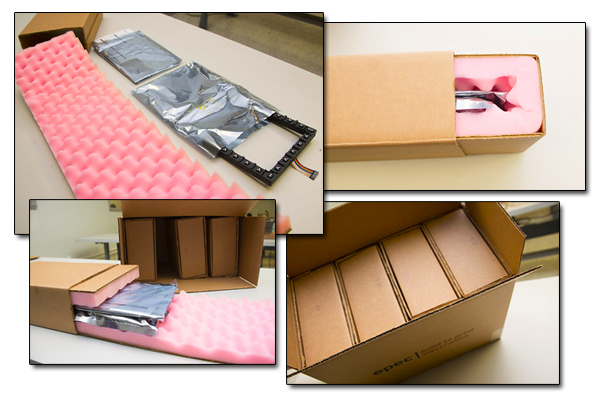Designers and manufacturers of silicone rubber keypads understand they are used for a wide range of industries and applications while needing to withstand heavy usage. Keypads are used extensively in both consumer and industrial electronic products as a low cost and reliable switching solution. In specific applications rubber keypads may be used in harsh outdoor environments that must withstand hundreds of actuations on a daily basis.
Epec Engineered Technologies

Recent Posts
As a necessary component in countless applications, custom designed cable assemblies have a major impact on the cost, and therefore the profitability, of any project. Designing a cable assembly that meets both environmental and electrical demands, while keeping costs low, can be a challenging task.
As a leader in user interface technology, we frequently get asked the question, "What kind of user interface is the best option for my application?" User interface, or Human Machine Interface (HMI), assembly designs are dependent on the application, housing, and the environment they will be used in. Choosing the right option and material is a key component.
Somewhere around the turn of the century, maybe in the last decade or so, there was a change in the job market. New requirements for employees coming into the job market, a higher standard. The days of getting high paying jobs based simply off prior work experience are behind us; that experience still means something, but not as much as it used to. So, what are employers looking for then? A college degree.
At Epec, we take workforce training very seriously. We readily invest in workforce education because it is a time-tested, proven path to improving manufacturing process development and customer satisfaction. In our experience, the educated workers are not only productive, but they are also adaptable problem solvers focused on satisfying our customers' most demanding needs.
The future of manufacturing in the U.S. is set up to be driven by volatile economic conditions, 3D printing, robotics, mobile technology, the Internet of Things, embedded devices, and other emerging technologies. Forecasting the future is always risky, but there are several factors converging right now that bring more clarity as we begin our journey into the second decade of the 21st century.
One of the most critical elements of producing any cable assembly or harness is the amount of cable assemblies testing that is done when the product is completed in manufacturing. There are many methods and levels for testing cable assemblies, but all testing has one goal – to ensure that the product meets or exceeds its specifications.
Packaging for user interface assemblies is the last step in the manufacturing process, but not a step that should be rushed. Epec pays as much attention to packaging detail as we do to design and manufacturing of custom assemblies. Because each assembly part number is customized, each has different size, mass, and shape. However, styles of user interfaces can be grouped into several categories. Experience has shown the type of packaging that works best is based on complexity of construction, shape, size, mass and shipped unit volume. No one packaging solution works for every assembly style.
One point that anyone involved with cable assemblies understands is that "every electronic or mechanical component will eventually reach the end of its life cycle". This blog post will define cable assembly obsolescence as the point in an assembly’s life cycle when it is either no longer in a usable state, meaning it is not functioning as it was designed, or there is no longer a use for the cable assembly due to technology changes.
At Epec, our staff members are our most valuable resource, and we believe in empowering employees for success. In this company, we celebrate each other’s success and support each other’s challenges. We strive to attract, hire, develop and retain passionate, talented, high-performance individuals that are driven by our mission which is to provide cost savings, technical resources and delivery advantage for our customers. We are committed to recruiting the best people that want to share our success, fit in our culture and live by our core values.






















